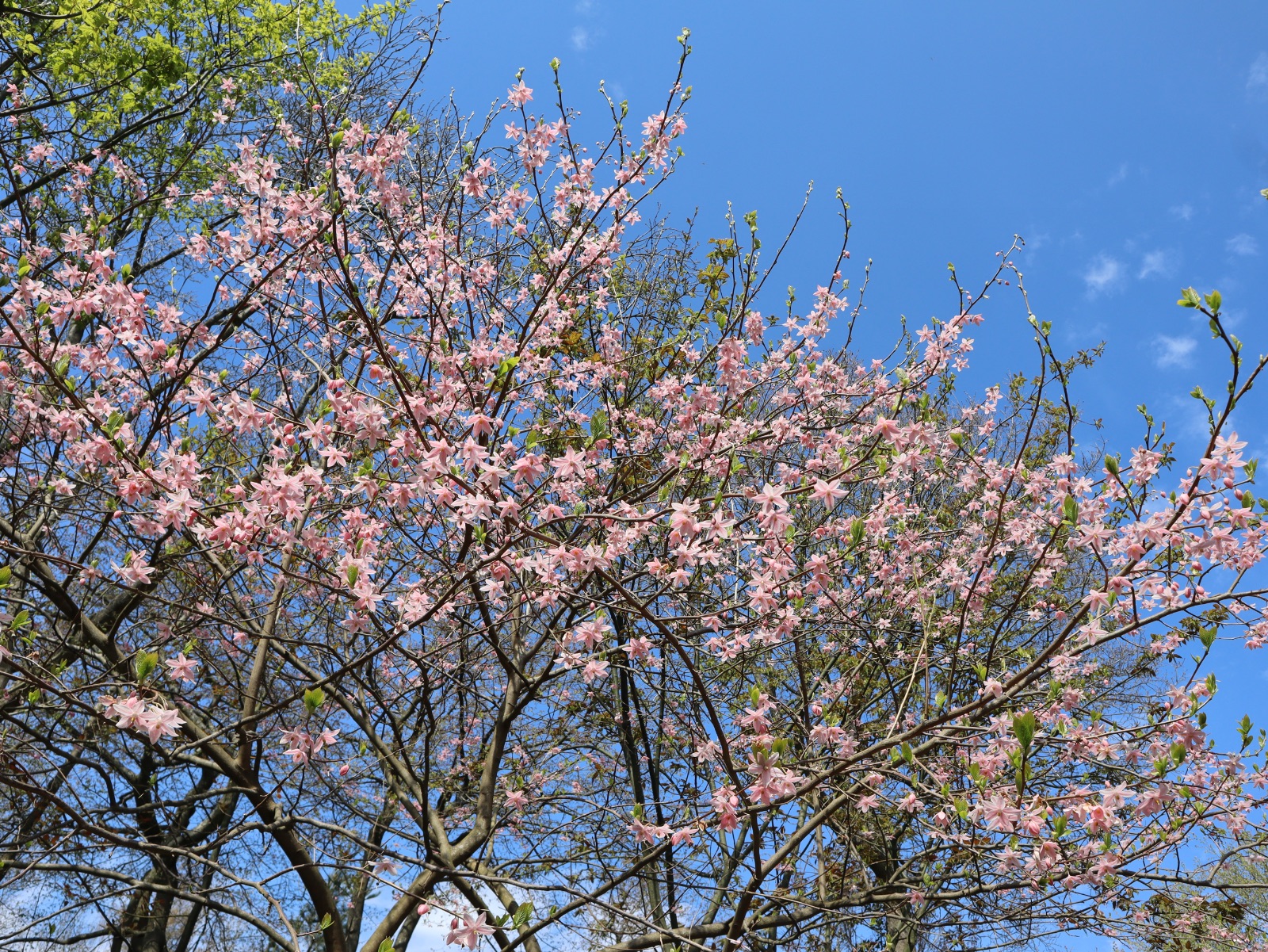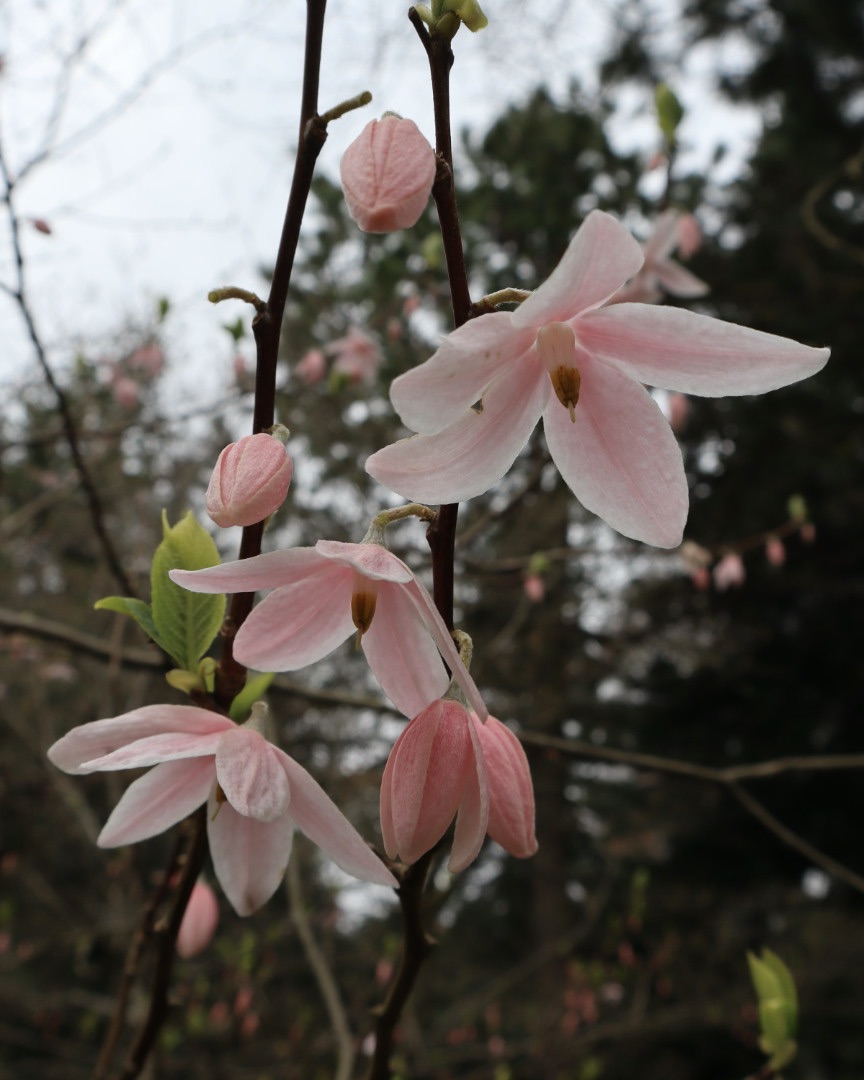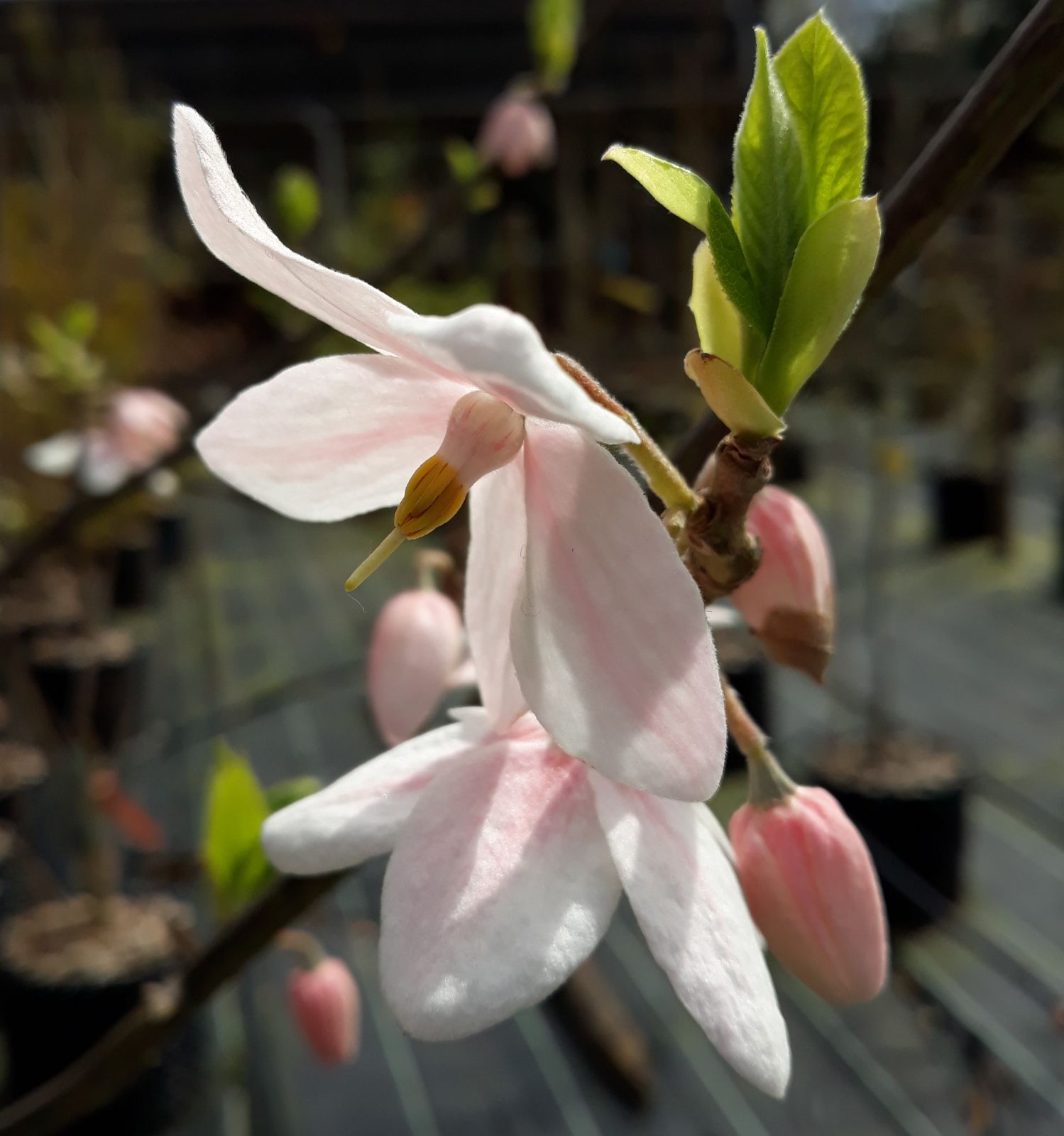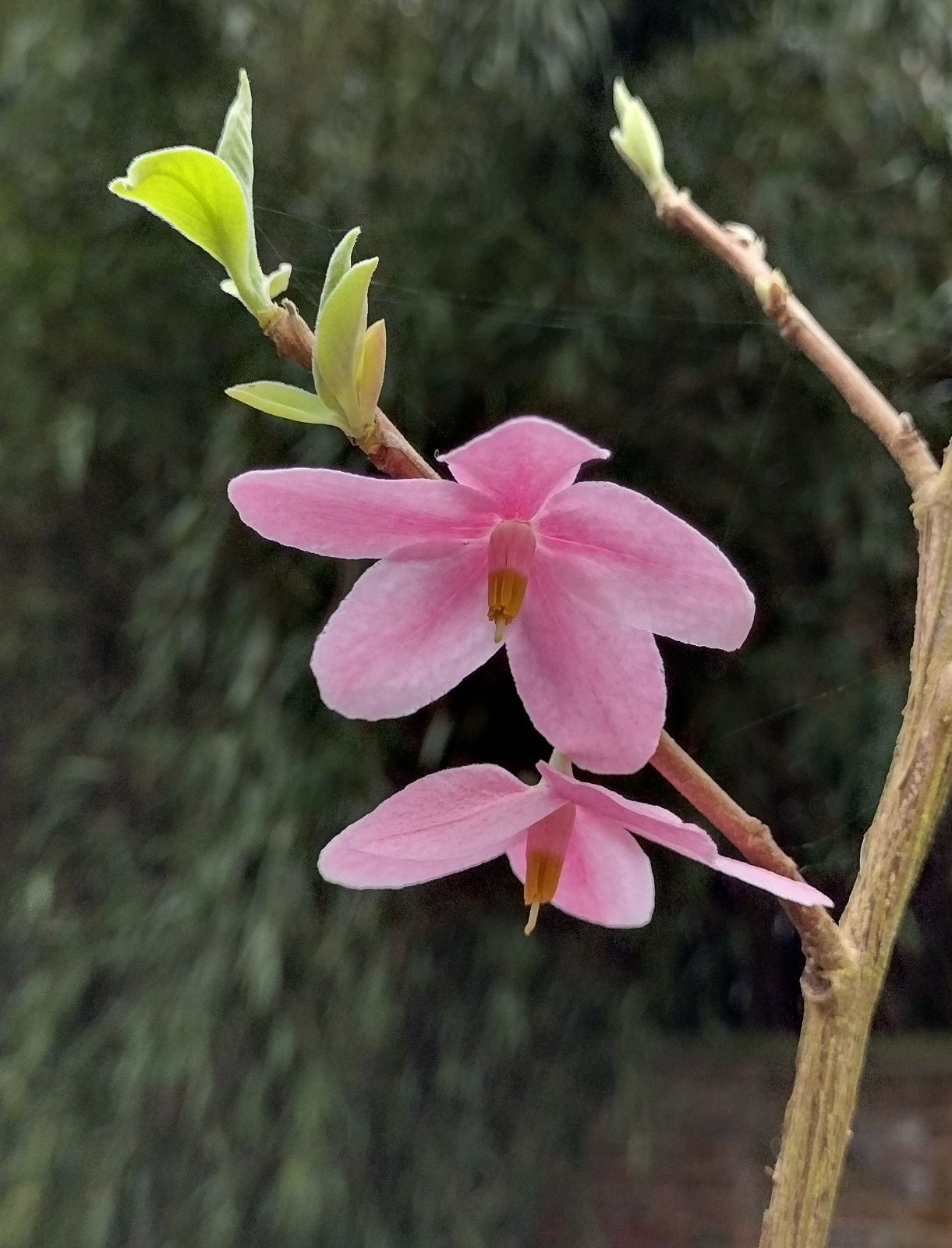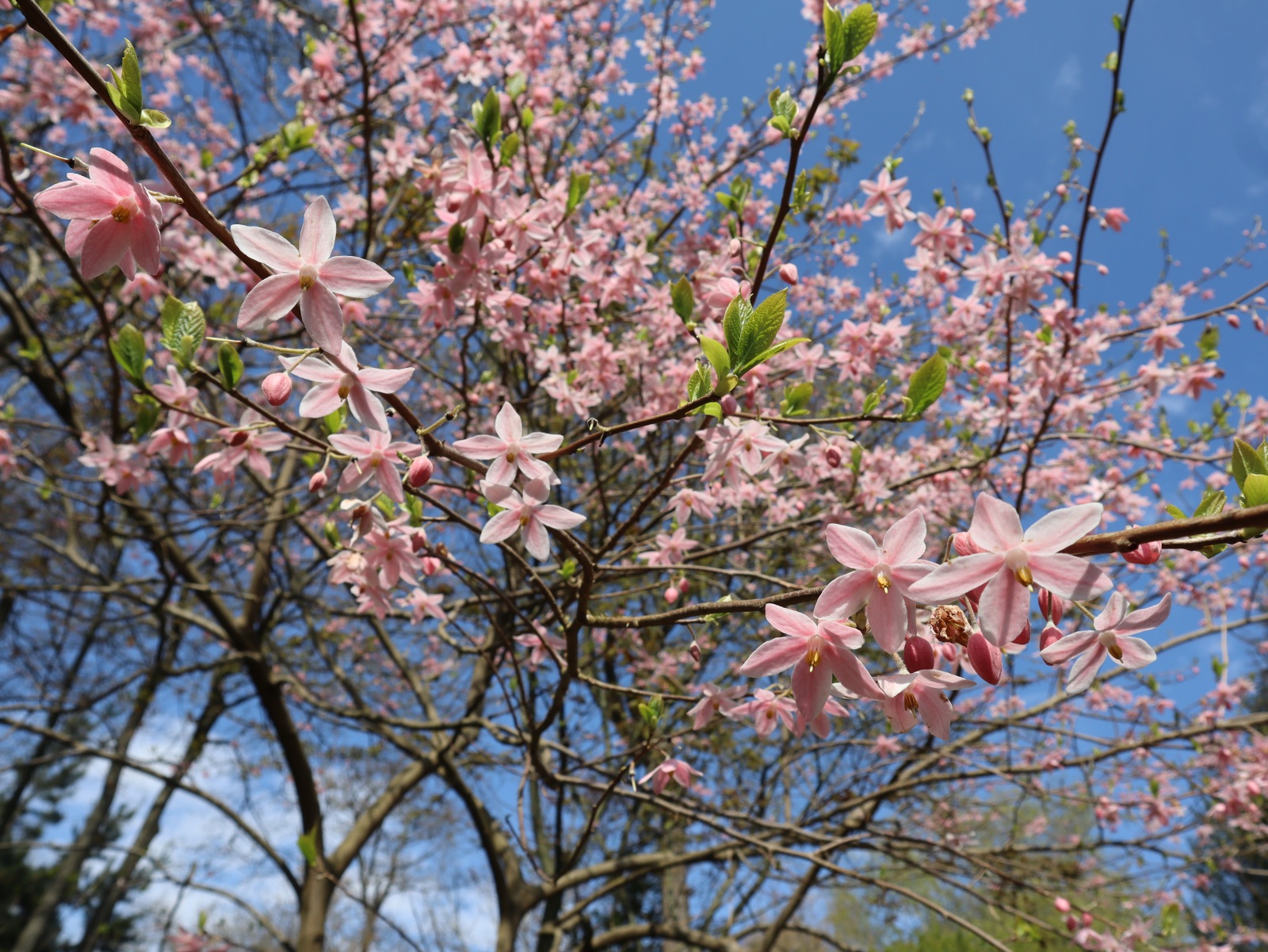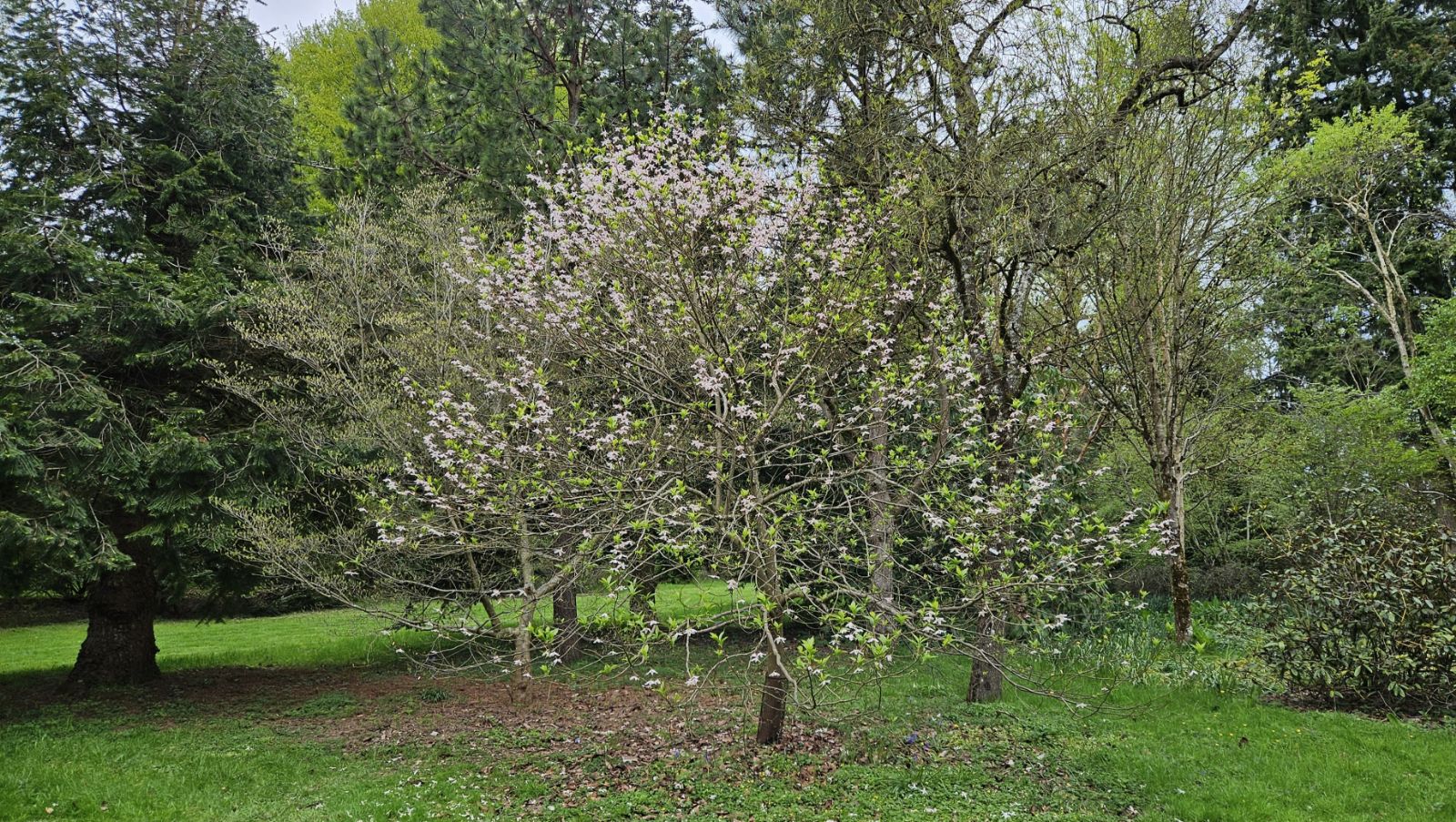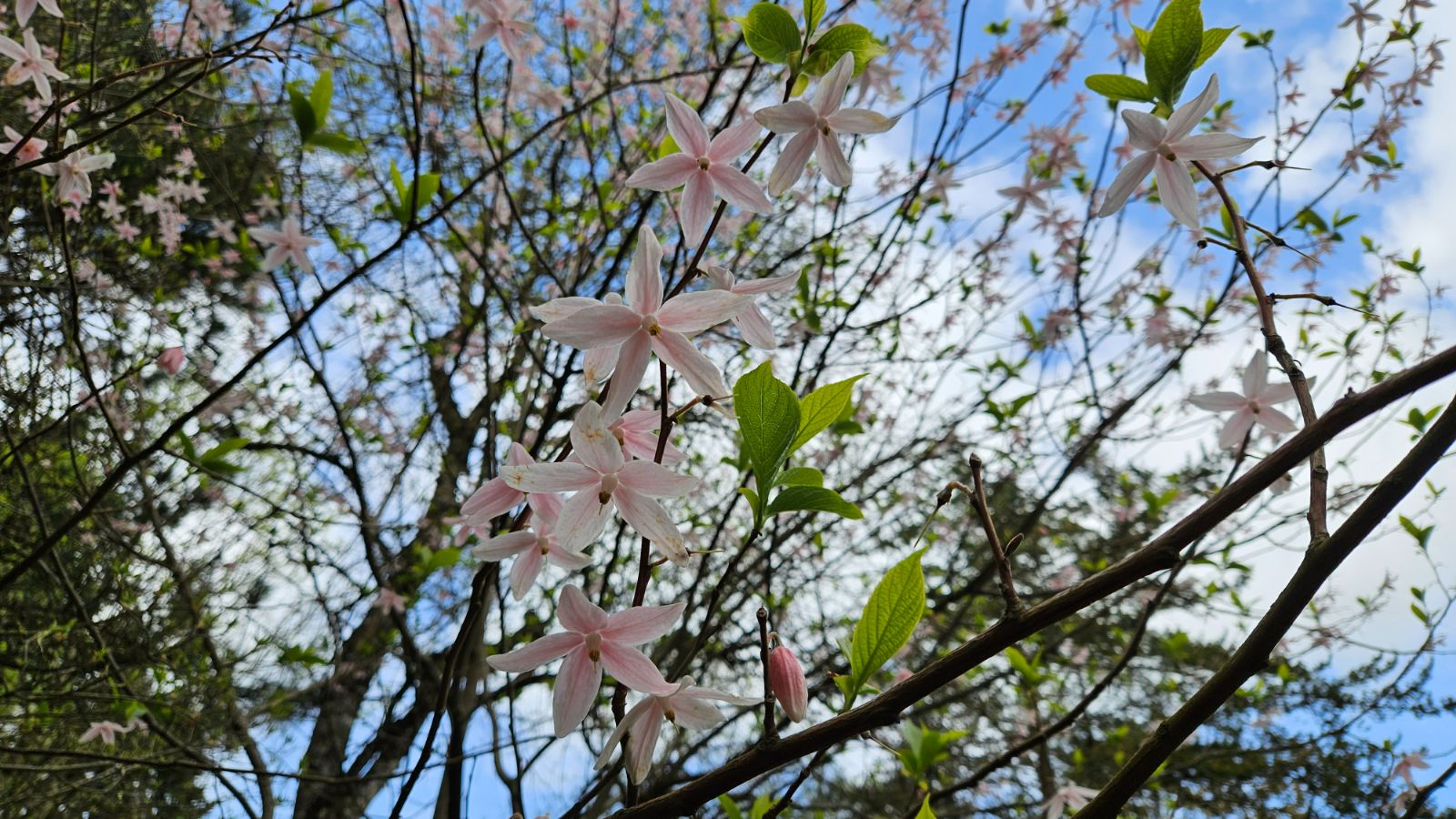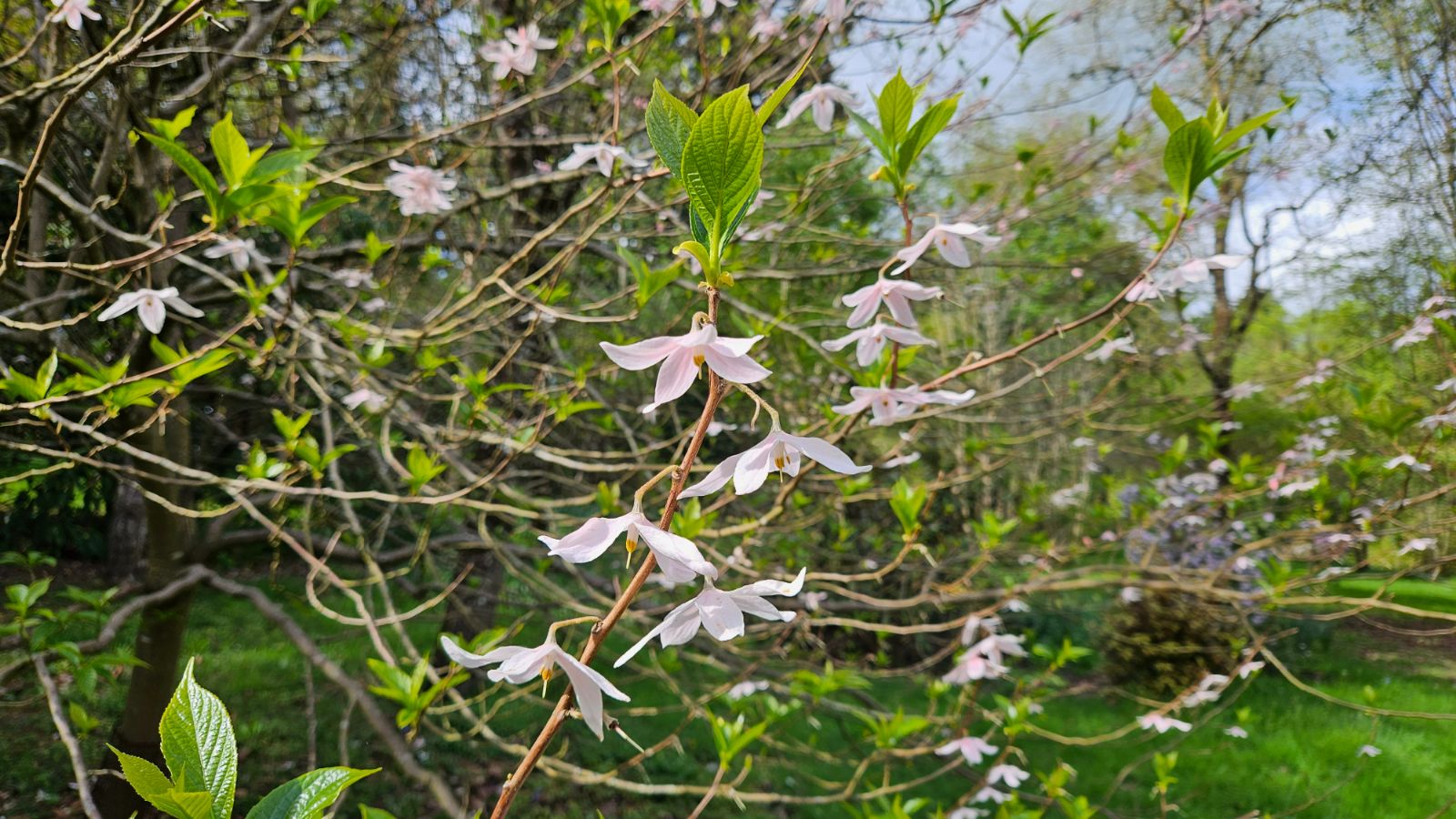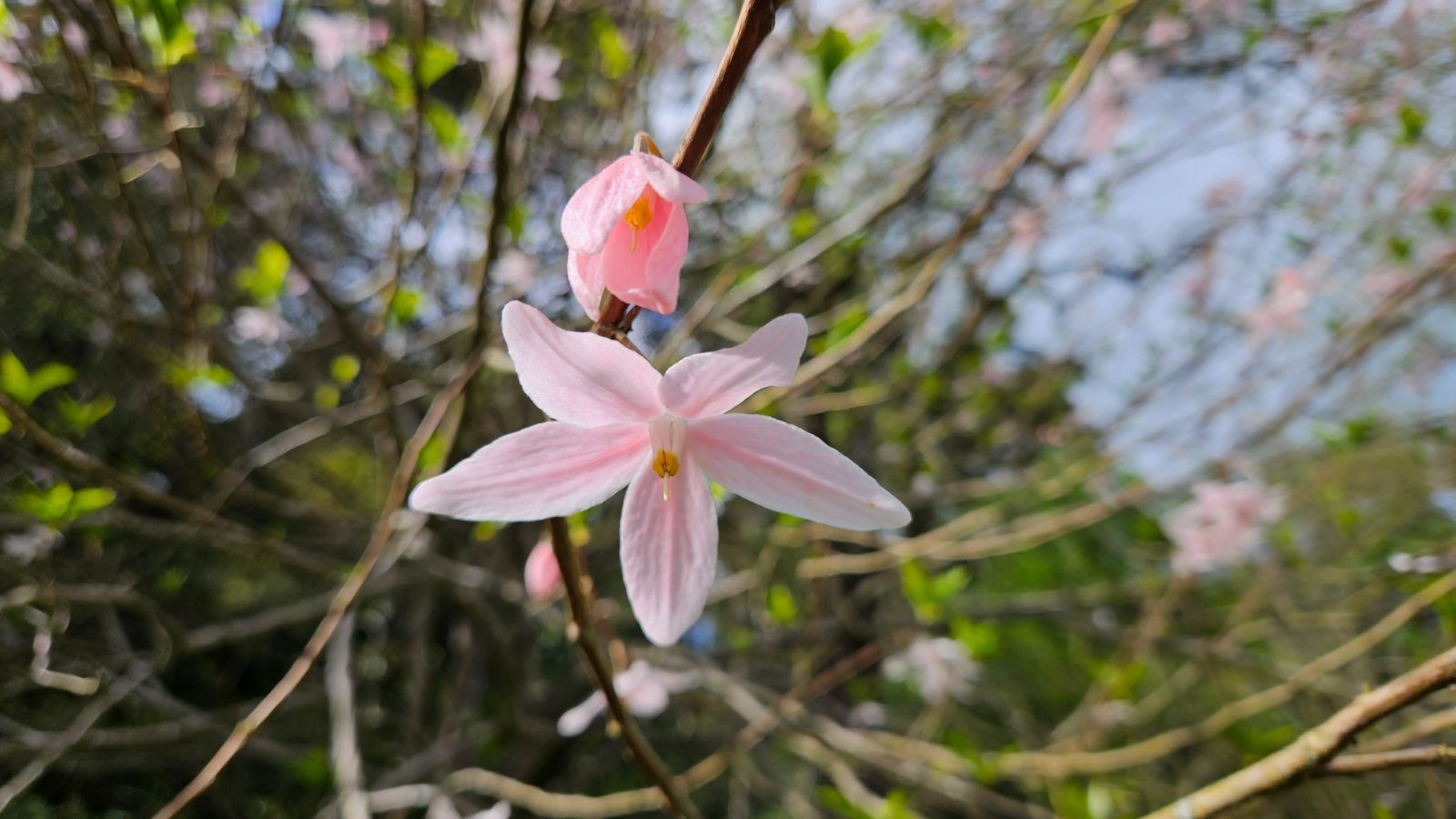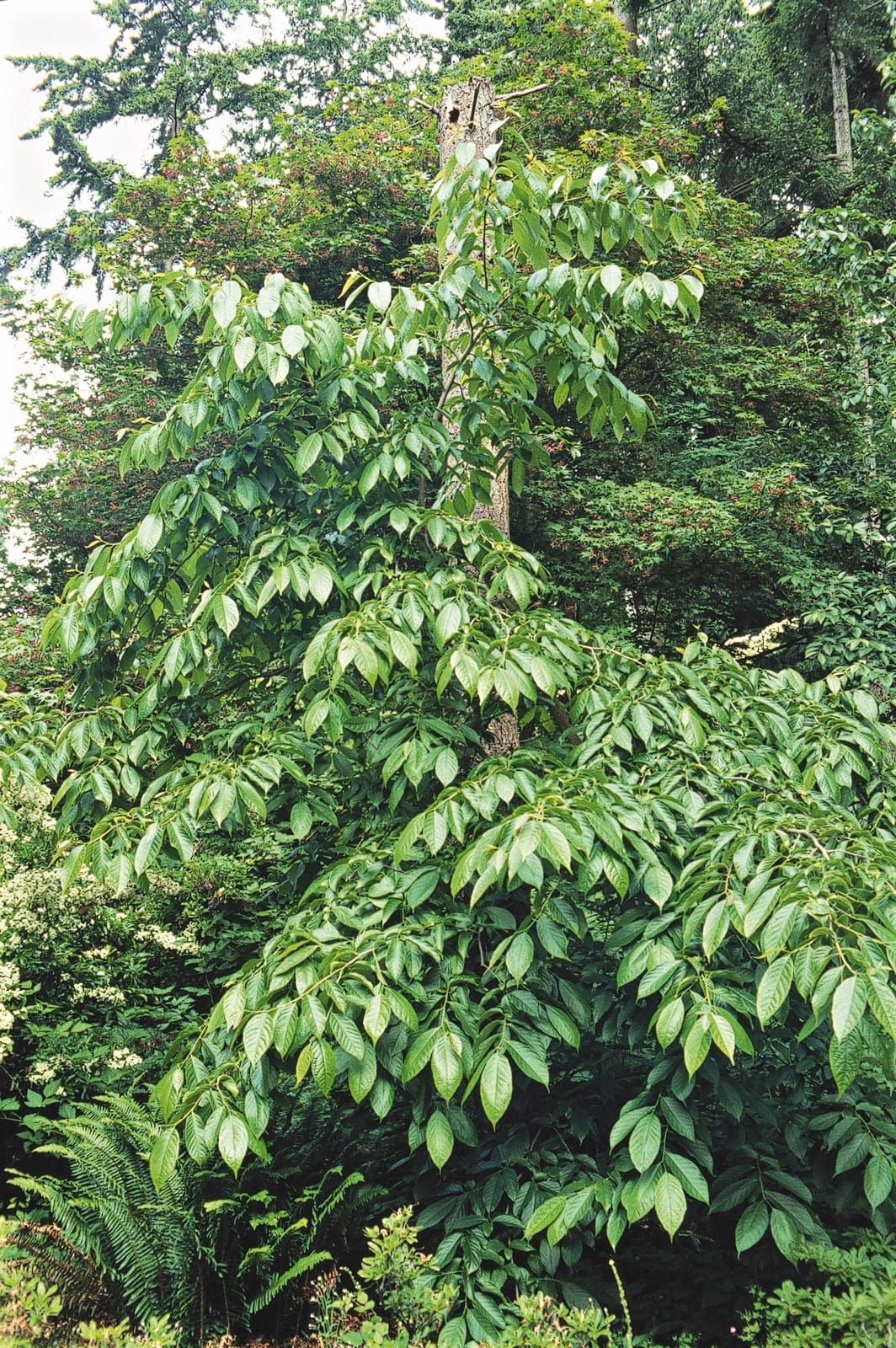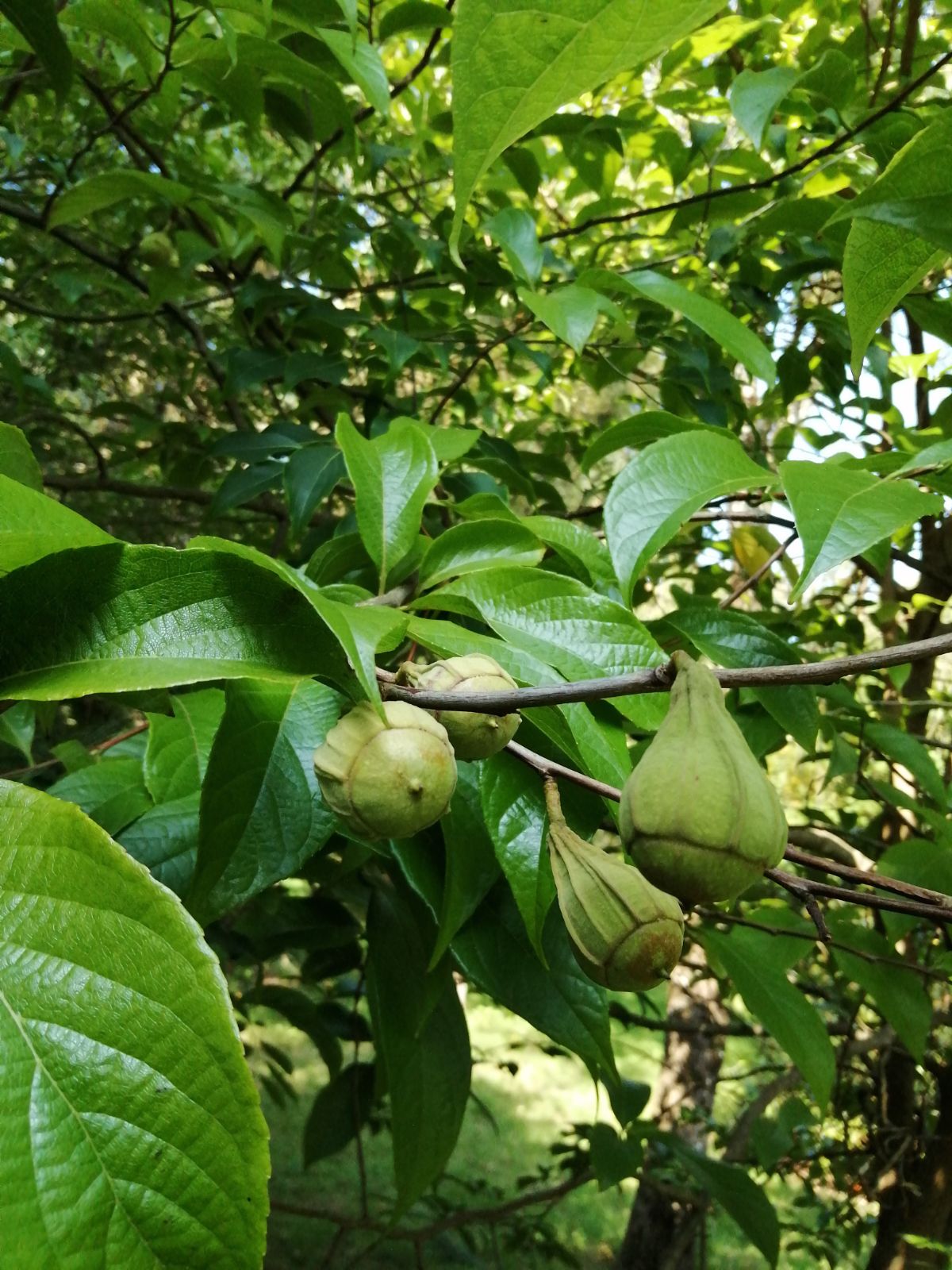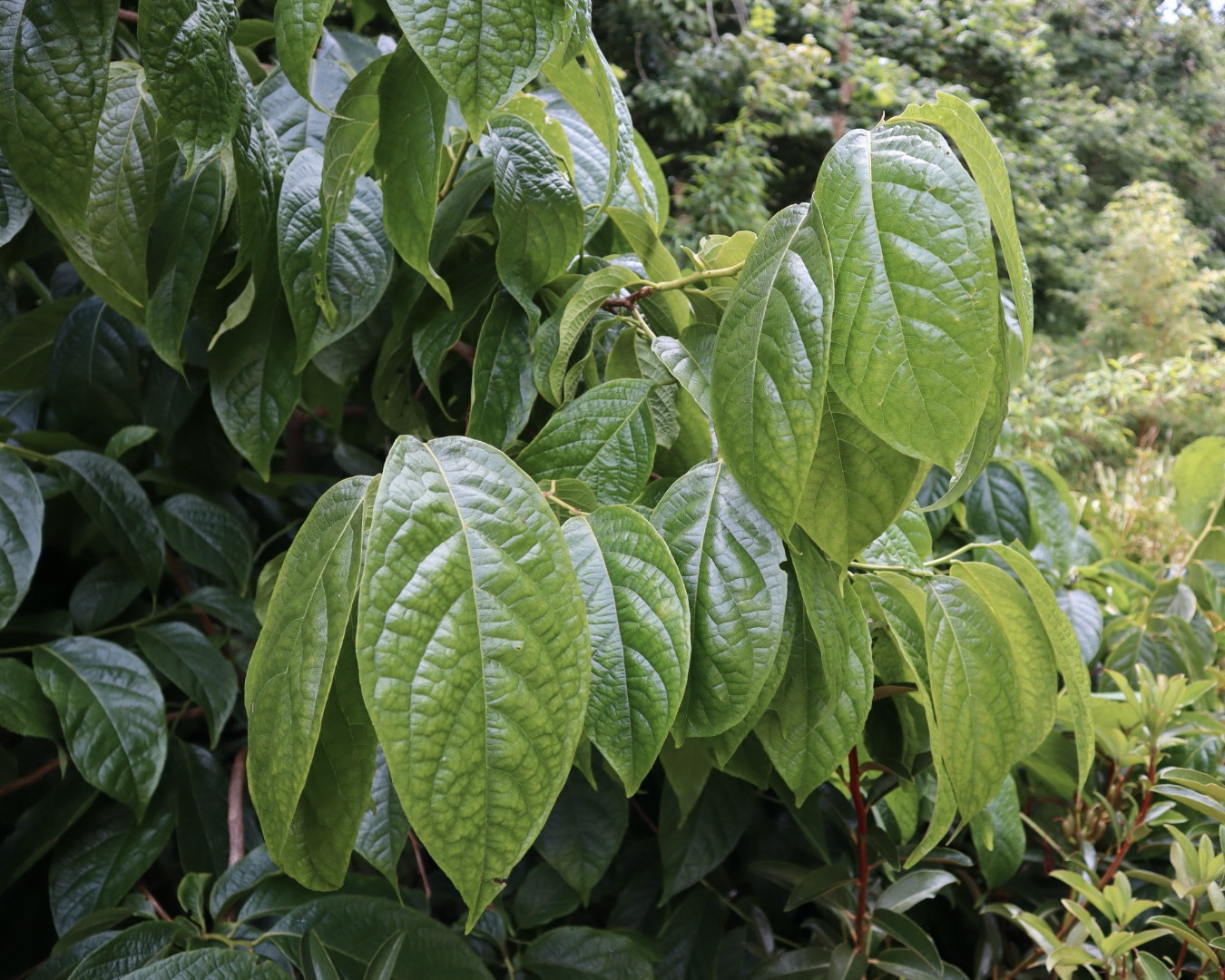Melliodendron xylocarpum
Sponsor
Kindly sponsored by
Arabella Lennox-Boyd
Credits
John Grimshaw & Ross Bayton (2009)
Recommended citation
Grimshaw, J. & Bayton, R. (2009), 'Melliodendron xylocarpum' from the website Trees and Shrubs Online (treesandshrubsonline.
Genus
Other taxa in genus
Tree 6–20 m, 0.2 m dbh. Bark greyish brown, often peeling irregularly. Leaves papery, 9.5–21 × 3–8 cm, ovate to lanceolate or oblong, densely covered with stellate tomentum when young, largely glabrous at maturity, though some tomentum may remain on the veins, seven to nine secondary veins on each side of the midrib, margins serrate, apex short-acuminate to acute; petiole 0.3–1 cm long. Flowers solitary or in pairs, situated in the leaf axils of older shoots, opening when the leaves emerge; subsessile or with a pedicel to 1.5 cm long. Calyx ~0.3 cm long, tubular and four-lobed, corolla campanulate and five-lobed, divided almost to the base, lobes 2–3 cm long, stamens 10 in one whorl, much shorter than corolla. Capsule attached to a persistent calyx, woody and indehiscent, obovoid to pyriform, 2–7 cm long, 5– to 10-ribbed, densely tomentose. Flowering April to May, fruiting July to October (China). (Hwang & Grimes 1996).
Distribution China Fukien, northern Guangdong, northwest Guangxi, Guizhou, Hunan, Jiangxi, southern Sichuan, southeast Yunnan
Habitat Forest ravines between 600 and 1500 m asl.
USDA Hardiness Zone 7-8
RHS Hardiness Rating H4
Conservation status Not evaluated (NE)
It is difficult to pin down the date of introduction of Melliodendron xylocarpum to Western horticulture, but in scarcely more than a decade it has become quite widely planted and much talked about. It seems to have arrived through multiple channels of the nursery trade, and plants and seeds are available from Chinese nurseries. The earliest record found is for 1994, when it was introduced to North America by Piroche Plants, British Columbia. It reached Europe at about the same time, as a plant obtained from the Shanghai Botanic Garden by Ken Beckett was being propagated at Hillier Nurseries in 1996 (A. Coombes, pers. comm. 2007). Some early material in Dutch nurseries at least was in fact Pterostyrax corymbosus – an error that was revealed when the trees came into flower (G. Fortgens, pers. comm. 2007). Authentic material is now being propagated in Boskoop (M. Bulk, pers. comm. via G. Fortgens 2007).
The trees at the David C. Lam Asian Garden in Vancouver are perhaps the best known examples of the species, and derive from the Piroche introduction. They have done well in this woodland garden, forming single-stemmed specimens with spreading branches, up to 6 m tall. The leaves are a slightly glossy bright mid-green, with a long drip-tip, and fall late in the autumn (Wharton, Hine & Justice 2005). The flowers, which are borne by even quite young trees, are its principal feature, being remarkably large (6–7 cm across when fully open). There seems to be a spectrum of colours of flowers, ranging from pure white to uniformly clear pink (and possibly darker), including some specimens that open white from pink-tinged buds (P. Wharton, pers. comm. 2008).
Melliodendron seems to grow well in warm, moist situations, and appreciates summer heat so long as there is adequate moisture and some light shade. It has a very southern and rather low-altitude distribution in China, which may explain why it was not introduced earlier, but despite this it seems to be winter-hardy, at least in Zone 8 temperatures and possibly into Zone 7b as well (it has survived without problem for four years in North Carolina: T. Avent, pers. comm. 2007). It flowers and leafs out in early spring and may therefore be at risk from spring frosts, so a site with some shelter – perhaps a high tree canopy – seems to be advisable. If its relatives Styrax and Halesia are taken as models, it will probably not enjoy a calcareous soil.

